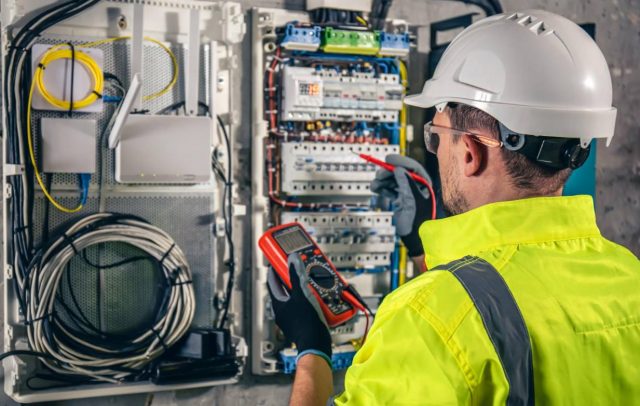What Is the Difference Between an Annulment and Divorce: Legal Perspectives
In addition to a formal divorce, couples can have their marriage annulled. These two procedures have fundamental differences and their own legal features. We propose to consider this issue in this article.
Definition and Purpose of Annulment and Divorce
When it comes to ending a marriage, there are two legal options available: annul vs divorce. Although both lead to divorce, we should specify what is the difference between an annulment and divorce. Understanding what sets them apart is critical for people looking to end a relationship.
Cancellation:
– means that the marriage was invalid from the moment of its conclusion;
– recognizes the marriage as legally non-existent.
Grounds for annulment are often some form of fraud or misrepresentation that affected one party’s consent to the marriage.
The main purpose of when can you get an annulment is to restore the premarital status of both parties. Divorce:
– recognizes the marriage as valid, but foresees its final termination;
– recognizes the existence of marital relations until the moment of their termination in court.
Grounds for divorce can vary, but usually include irreconcilable differences, adultery, abuse, etc.
The main purpose of divorce is the official termination of marriage.
Although both annulment and divorce end a marriage, they differ significantly. An annulment erases any legal recognition that the marriage was ever valid, while a divorce recognizes its legal validity before its complete dissolution.
Кey differences between annulment and divorce:
| Aspect | Annulment | Divorce |
| Definition | Declares a marriage null and void as if it never existed. | Dissolves a valid marriage, ending the legal relationship. |
| Grounds | Typically based on specific grounds like fraud, bigamy, impotence, or lack of consent. | No-fault and fault-based grounds depending on jurisdiction. |
| Time Frame | Can be filed shortly after marriage, often within a limited period. | Filed after a waiting period, typically after a longer marriage duration. |
| Presumption | Presumes that the marriage was invalid from the beginning. | Presumes the marriage was valid until proven otherwise. |
| Property Division | Often simpler, as there are no marital assets to divide. | Involves the division of marital property and assets. |
| Alimony/Spousal Support | Typically not awarded, except in specific cases. | Can involve alimony/spousal support arrangements. |
| Children/Custody | Child custody and support arrangements may still be required. | Child custody and support arrangements are determined. |
| Religious Implications | Can have fewer religious implications since the marriage is considered void. | May have religious implications, depending on the faith’s views on divorce. |
| Annulment vs. Divorce Cost | Can be less costly due to the shorter marriage duration. | May involve higher costs due to property division and longer legal process. |
| Emotional Impact | May carry less stigma since the marriage is deemed invalid. | May carry more social stigma due to the dissolution of a valid marriage. |
Grounds for annulment of marriage and grounds for divorce
Annulment of a marriage involves declaring it invalid from the very beginning.
Grounds for annulment of marriage are often circumstances relevant at the time of marriage or factors that influenced one of the parties to give consent to it. These grounds include:
- Fraud or misrepresentation: If one party misleads the other about an important aspect of their relationship, such as financial status, fertility or intentions to have children.
- Absence of physical intimacy: if there has been no intercourse since the moment of marriage.
- Bigamy: If one party is still legally married to someone else at the time of the new marriage.
Divorce recognizes a marriage as valid but seeks to end it permanently due to irreconcilable differences or other reasons.
Grounds for divorce are considered to be:
- Irrevocable marital breakdown: when both parties agree that there are significant problems in their marriage and see no possibility of reconciliation.
- Guilt-related reasons: when one of the parties commits adultery, violence in the relationship, abuses alcohol and has other addictions, etc.
Thus, an annulment focuses on proving nullity from the outset due to certain circumstances surrounding the consent to marry, while a divorce involves the termination of a valid marital relationship due to irreconcilable differences or other reasons.
Legal process and requirements for obtaining an annulment
Annulment involves going through a more rigorous legal process and meeting specific requirements compared to divorce. It is necessary to prove that there were certain circumstances during the conclusion of the marriage that influenced the fact that you consented to its registration. Understanding these general nuances will help you understand whether you will be able to annul your marriage or have to dissolve it through divorce.
Peculiarities of the legal process and requirements for annulment of marriage
To annul your marriage, you need to follow these steps:
- Filing a petition: one of the spouses files a petition or complaint with the appropriate court.
- Service of documents on the other party: The applicant must serve copies of the divorce documents on the other party.
- Response and Negotiations: The party who receives copies of the documents has the opportunity to respond to the petition and potentially negotiate terms such as property division, child custody, child support, etc.
- Discussion: Both parties share relevant information about their financial assets, debts, etc. through formal discovery requests or voluntary disclosures.
- Pre-Counseling: In many cases, couples attend mediation sessions or consult other professionals to resolve any issues before the court.
- Litigation: If an agreement cannot be reached through negotiation or mediation, the case may go to court, where a judge will decide the outstanding issues based on the evidence presented by the parties.
- Obtaining a divorce decree: When all issues have been resolved through negotiations or through the courts, a formal divorce decree is issued.
You should consult with a family law attorney for specific guidance on how to complete these steps and meet specific legal requirements.
Financial consequences of marriage annulment and divorce
Cancellation provides fewer financial obligations or rights compared to divorce. You may have to resolve specific financial issues related to the distribution of property acquired during the relationship or joint debts.
Divorce, as a rule, involves a comprehensive assessment of the assets and liabilities of the spouses.
The court determines how to distribute this property, assets and debts accumulated during the marriage.
Alimony is assigned taking into account such factors as the disparity of income of the spouses, the duration of the marriage and the needs of each party.
It is important to consult with a family law attorney to get individualized advice for your specific financial situation. A specialist will help you understand how annulment or divorce can affect your finances and explain how to go through all the necessary legal procedures. Keep in mind that the laws governing these matters can vary significantly from jurisdiction to jurisdiction.
Custody and alimony issues in annulment cases
Divorce is generally available if certain conditions existed at the time of its conclusion that make it invalid.
Some common grounds for cancellation include:
– one or both parties were minors at the time of marriage;
– one party was forced to marry against her will;
– marriage is concluded between close blood relatives.
In an annulment case, as in a divorce case, custody issues are decided based on what is in the best interests of the child.
The court takes into account such factors as the parents’ ability to work, stability and ability to provide a comfortable environment for the child.
Alimony obligations may also arise during the annulment of the marriage if there are children in it.
The court considers factors such as each parent’s income, financial resources, and custody arrangements when determining child support.
Division of property upon annulment of marriage and upon divorce
Since an annulment treats a marriage as one that legally never existed, the property distribution procedure may be different than in a divorce.
In most cases, the courts seek to restore the financial position of both parties to what they had before the marriage.
The court may consider factors such as the personal contributions of each spouse or any agreements or contracts entered into before or during the marriage.
During a divorce, the division of property usually involves the division of property and debts acquired during the marriage. Courts usually follow principles of equitable distribution and applicable law when determining how to divide assets.
Factors taken into account are each party’s financial contribution during the marriage, individual needs, earning capacity and any prenuptial or postnuptial agreements.
Individuals going through annulment or divorce proceedings should consult with a family law attorney who can provide information on how property will be divided depending on the specific circumstances.
Looking to understand the legal distinctions between annulment and divorce? Check out valuable insights and resources like “https://divorceonlineutah.com/utah-free-printable-divorce-forms/” to explore the differences and make informed decisions about the best course of action for your situation. Whether you’re seeking an annulment or a divorce, having access to free printable divorce forms can be a helpful resource in navigating the legal process effectively.
















